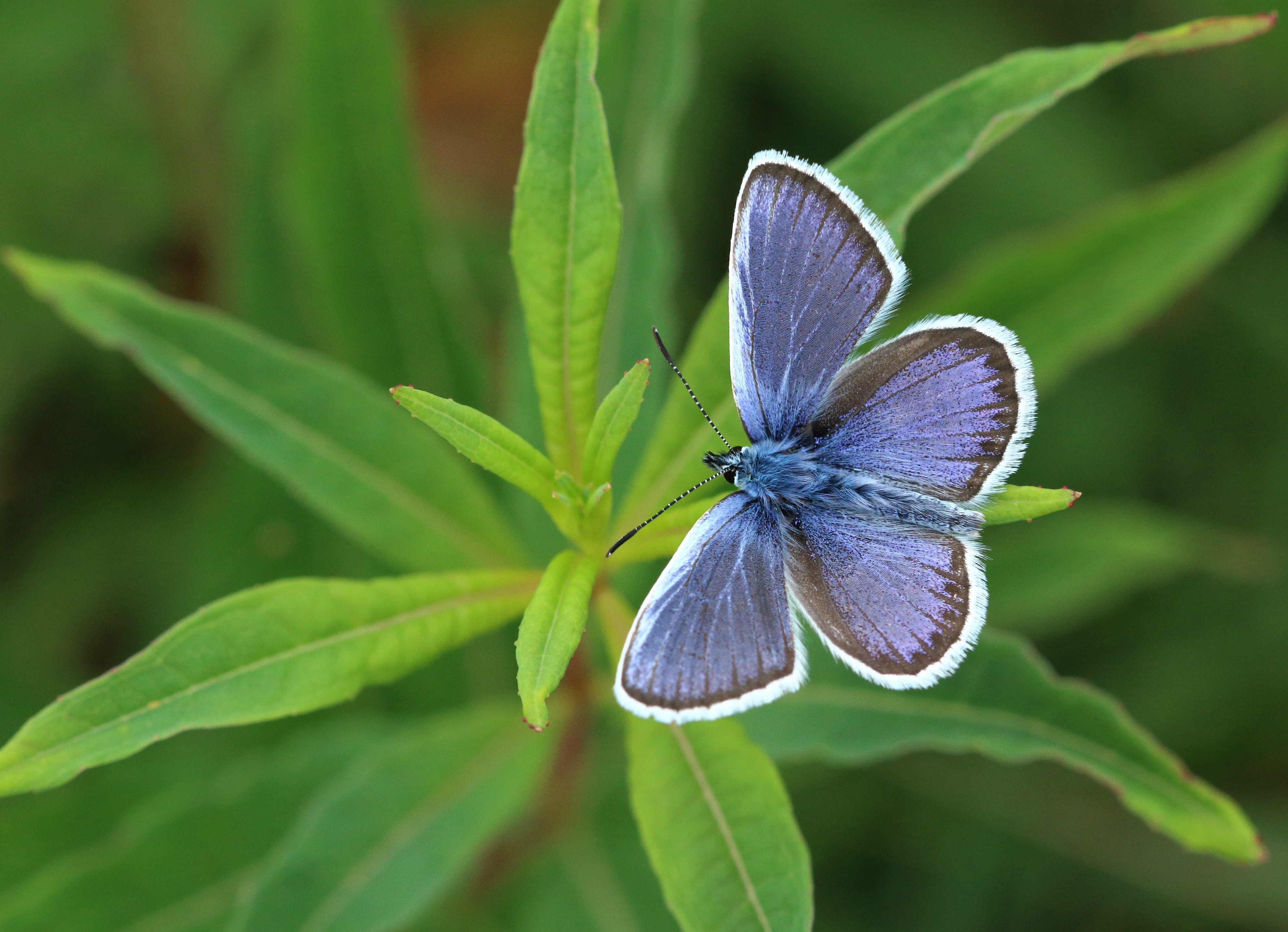Conservation Officer Rachel Jones reveals how Butterfly Conservation and the Dorset Wildlife Trust have been working together on the beautiful Isle of Portland to help protect the Silver-studded Blue butterfly.
"The Silver-studded Blue is a beautiful, small and exquisite butterfly. Males have blue upper-wings and the females are brown. However both butterflies can be identified by the light blue metallic ‘studs’ that can be seen on the underside of the wings. The butterfly can be seen flying through late June and July, but they are fairly sedentary and rarely move more than 20m a day.
In Dorset this butterfly is generally associated with the Dorset Heaths, but a rare ‘Cretaceous’ form of the Silver-studded Blues can still be found on the disused limestone quarries on the Isle of Portland. Silver-studded Blues are associated with bare ground which can be found in the quarries, this ground warms up quickly in spring, at a crucial time for the larvae to feed and develop.
Female Silver-studded Blues lay their eggs on or around their larval foodplants, Horseshoe Vetch or Common Bird’s-foot Trefoil and in areas where the butterfly detects the presence of certain species of black ants. Ants play a crucial part in protecting the butterfly in both the larval and pupal stage from predators and parasites, ants are rewarded by sweet secretions from the larvae.
In the 1980s and 90s Silver-studded Blues were a common site across Portland when there were large expanses of bare ground habitat from quarrying. Through the 90s these areas of bare ground became overgrown with grasses, brambles and other invasive plants resulting in a decline in the number of colonies and population sizes of Silver-studded Blue. In 1994 26 colonies were recorded across the island, in 2008 this had reduced to 12 and in 2015 just nine were recorded with four of these only supporting very small populations.
In 2002 the local Butterfly Conservation Dorset Branch were concerned by the decreasing populations at Broadcroft Quarries (populations of 664 in 1997 to 39 in 2002), so were successful in obtaining a grant to create new breeding habitat for Silver-studded Blues. In January 2003 a digger was used to scrape back the fertile topsoil that had built up over the years to expose the limestone, in total 26 ‘scrapes’ were created over 4.5 hectares. Within two years the ants and larval foodplants had colonised scrapes and butterfly populations appeared to be responding well. These scrapes have helped to sustain populations at Broadcroft Quarries but in recent years some of the scrapes were becoming over-grown despite annual management by volunteers. It was clear further action was needed to boost populations.
In 2011 Dorset Wildlife Trust (DWT) launched the Isle of Portland Living Landscapes Project (PLLP), largely funded by Viridor Credits (as part of the Landfill Communities Fund), this project has been instrumental in clearing 200ha of invasive plants and restoring significant areas of nationally and internationally important limestone grassland habitat. Annual monitoring of butterflies conducted by BC shows many butterflies and moths are responding well to this island wide conservation project but Silver-studded Blues needed more targeted management.
In 2015, funded by DWT’s PLLP, BC conducted an island-wide survey to help identify core colonies and management sites. As the butterfly does not move very far it is important to target management within core colonies to boost existing populations, or very close to existing colonies to encourage the butterfly to spread. In winter 2016, supported by volunteers DWT negotiated with Portland Port and Portland Stone to create over 30 new scrapes on two of the core Silver-studded Blue sites on the Island.
Although it is too early to report on the butterfly response, recent surveys showed that by summer 2016 the larval foodplant was present in all but two of the newly created scrapes. With populations at Broadcroft Quarry at a low in 2016, it is believed this habitat re-creation work has come just in time for Silver-studded Blue. This work will be important in helping sustain and increase populations of this beautiful, rare butterfly for local people and visitors to Portland to enjoy into the future."
Follow Rachel on Twitter @rachJBC


